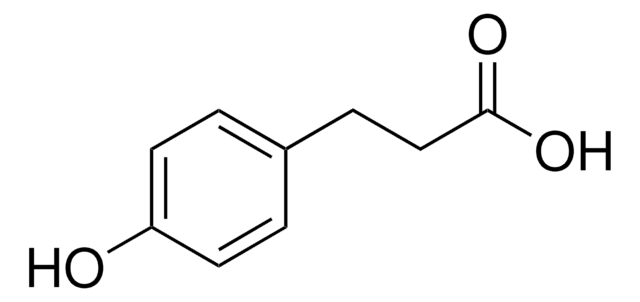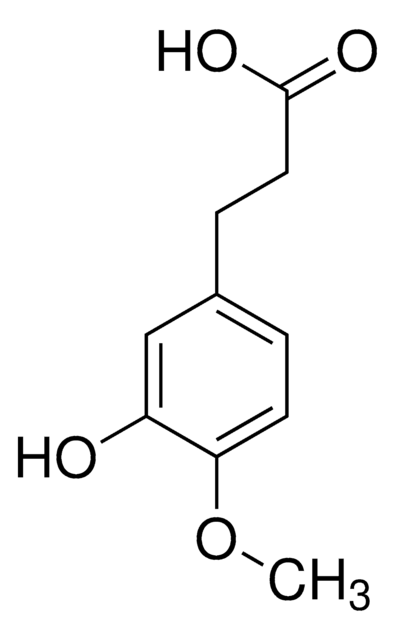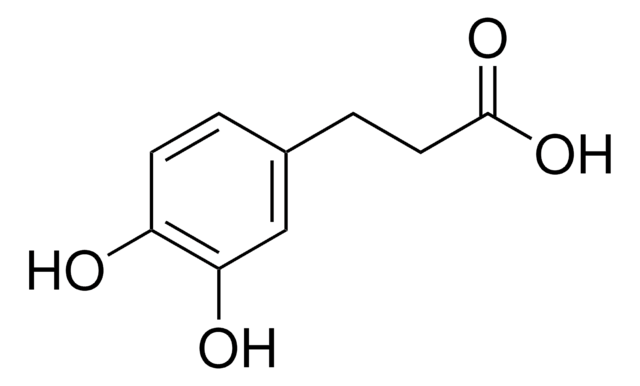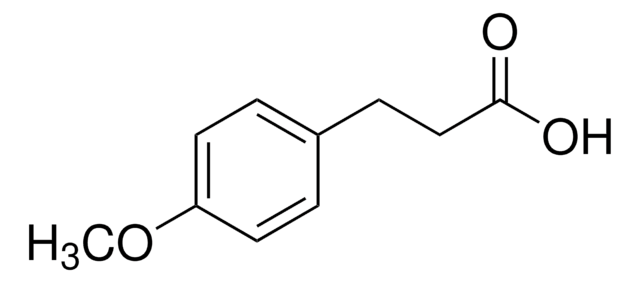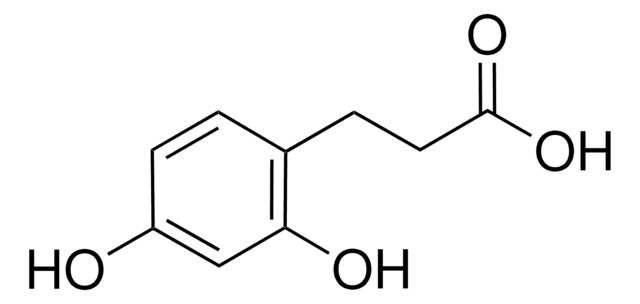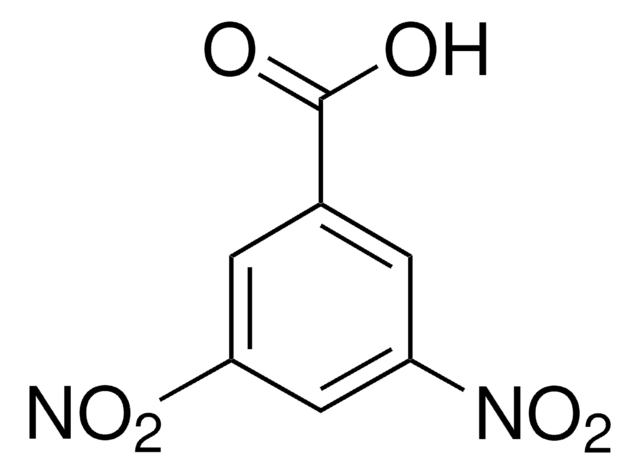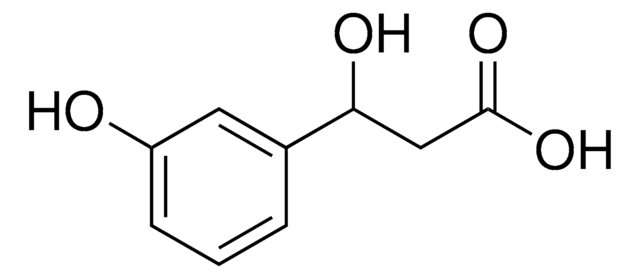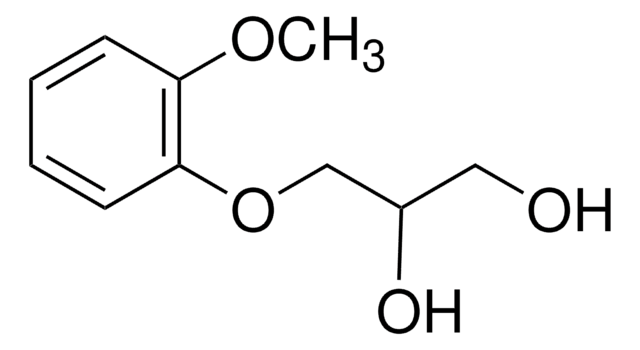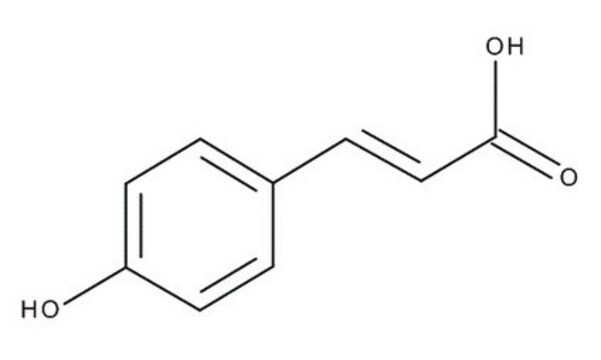Alle Fotos(1)
Wichtige Dokumente
17803
3-(4-Hydroxy-3-methoxyphenyl)-propionsäure
≥96.0% (T)
Synonym(e):
Hydroferulasäure
Anmeldenzur Ansicht organisationsspezifischer und vertraglich vereinbarter Preise
Alle Fotos(1)
About This Item
Empirische Formel (Hill-System):
C10H12O4
CAS-Nummer:
Molekulargewicht:
196.20
Beilstein:
2110370
EG-Nummer:
MDL-Nummer:
UNSPSC-Code:
12352100
PubChem Substanz-ID:
NACRES:
NA.22
Empfohlene Produkte
Qualitätsniveau
Assay
≥96.0% (T)
Form
powder
mp (Schmelzpunkt)
87-93 °C
Funktionelle Gruppe
carboxylic acid
SMILES String
COc1cc(CCC(O)=O)ccc1O
InChI
1S/C10H12O4/c1-14-9-6-7(2-4-8(9)11)3-5-10(12)13/h2,4,6,11H,3,5H2,1H3,(H,12,13)
InChIKey
BOLQJTPHPSDZHR-UHFFFAOYSA-N
Verwandte Kategorien
Anwendung
3-(4-Hydroxy-3-methoxyphenyl)propionic acid (hydroferulic acid) was used to inhibit prostaglandin E(2) production.
Signalwort
Warning
H-Sätze
Gefahreneinstufungen
Acute Tox. 4 Oral - Eye Irrit. 2 - Skin Irrit. 2 - STOT SE 3
Zielorgane
Respiratory system
Lagerklassenschlüssel
11 - Combustible Solids
WGK
WGK 2
Flammpunkt (°F)
Not applicable
Flammpunkt (°C)
Not applicable
Persönliche Schutzausrüstung
dust mask type N95 (US), Eyeshields, Gloves
Hier finden Sie alle aktuellen Versionen:
Besitzen Sie dieses Produkt bereits?
In der Dokumentenbibliothek finden Sie die Dokumentation zu den Produkten, die Sie kürzlich erworben haben.
Kunden haben sich ebenfalls angesehen
Mar Larrosa et al.
Molecular nutrition & food research, 53(8), 1044-1054 (2009-06-27)
The polyphenols in fruits and vegetables may be partly responsible for the health-promoting effects attributed to fruit and vegetable intake. Although their properties have been relatively well studied, the activity of their metabolites, produced after ingestion, has been poorly investigated.
Oscar J Lara-Guzmán et al.
Free radical biology & medicine, 160, 604-617 (2020-08-04)
Oxylipins are considered biomarkers related to cardiovascular diseases (CVDs). They are generated in vivo via the oxygenation of polyunsaturated fatty acids as a result of oxidative stress and inflammation. Oxylipins are involved in vascular functions and are produced during foam
Lee E Hunt et al.
Biomolecules, 11(1) (2021-01-06)
There is ongoing interest in exploiting the antioxidant activity and other medicinal properties of natural monophenolic/polyphenolic compounds, but their generally low aqueous solubility limits their applications. Numerous studies have been undertaken to solubilize such compounds via supramolecular derivatization with co-crystal
Elzbieta Radzyminska-Lenarcik et al.
Polymers, 11(11) (2019-11-02)
The study involved the transport of zinc(II), cadmium(II), and nickel(II) ions from acidic aqueous solutions using polymer inclusion membranes (PIMs). PIMs consisted of cellulose triacetate (CTA) as a support; o-nitrophenyl pentyl ether (o-NPPE) as a plasticizer; and 1-octylimidazole (1), 1-octyl-2-methylimidazole
Miren Gómez-Juaristi et al.
Nutrients, 11(7) (2019-06-30)
Cocoa has beneficial health effects partly due to its high flavanol content. This study was aimed at assessing the absorption and metabolism of polyphenols in two soluble cocoa products: a conventional (CC) and a flavanol-rich product (CC-PP). A crossover, randomized
Unser Team von Wissenschaftlern verfügt über Erfahrung in allen Forschungsbereichen einschließlich Life Science, Materialwissenschaften, chemischer Synthese, Chromatographie, Analytik und vielen mehr..
Setzen Sie sich mit dem technischen Dienst in Verbindung.